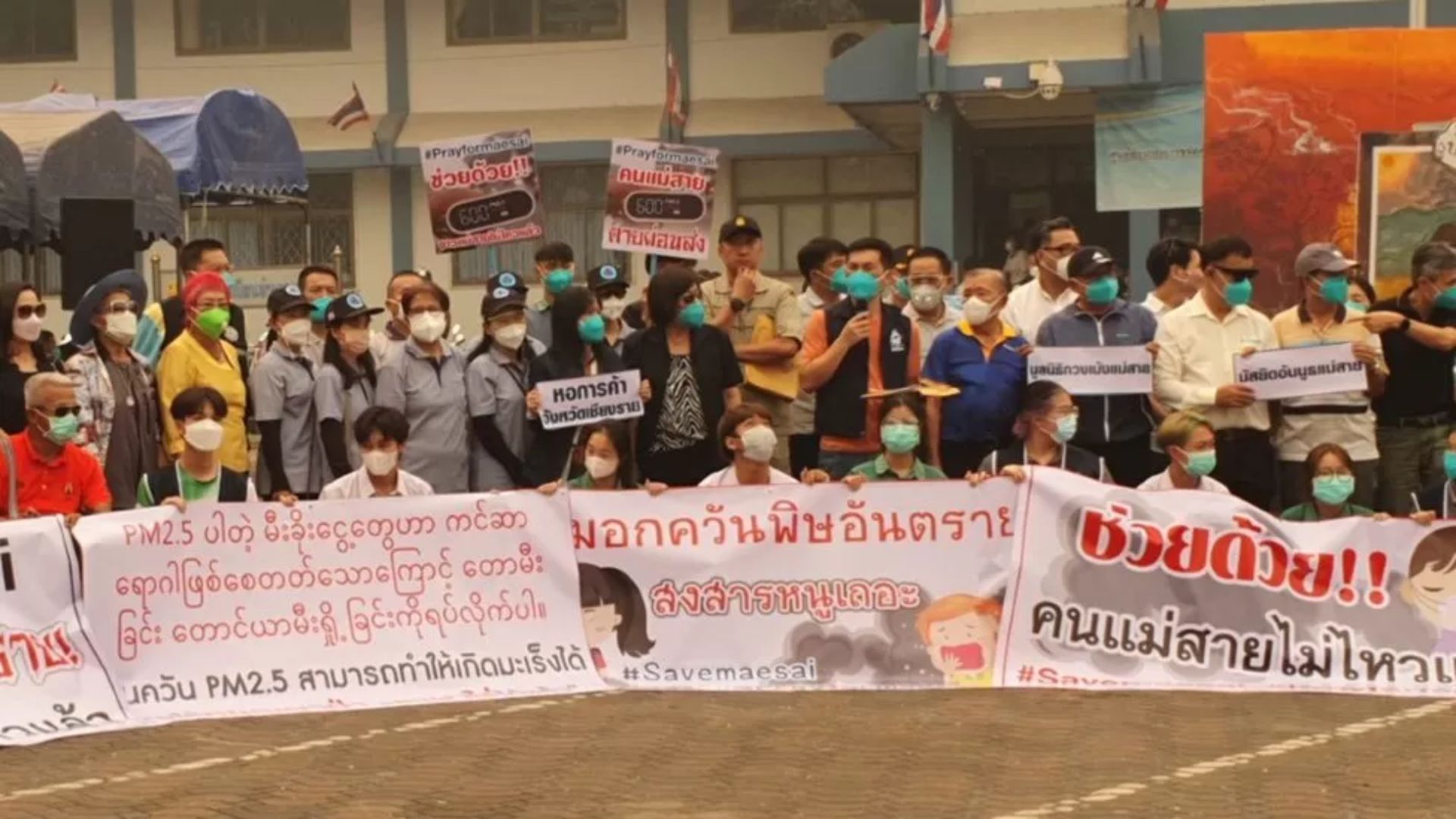Thommamoon Khowasat is worried about the lingering poor air quality in Chiang Rai
Thommamoon Khowasat has spent the last few weeks painstakingly explaining to his four-year-old daughter that the yellow cloud outside their window, which has captured her imagination, is a health risk.
It is a fear that has gripped northern Thailand, where millions of people are struggling to breathe.
Widespread farm burning and forest fires have produced even thicker smog than usual, choking communities and exposing them to respiratory disease.
People in the tourist-friendly Chiang Rai province, as well as in the capital Bangkok, have been on high alert, checking the air quality levels every day.
"I feel very sorry for my daughter," said Thommamoon, who has lived in Chiang Rai for 20 years and has never seen haze this thick.
"She had no idea as a child. She believes it is natural fog. However, the truth is a poisonous mist."
The girl is under strict orders to stay at home, but even with an air purifier running, the air quality is compromised.
Dr. Veera Isarathanan of Chiang Rai's Mae Chan Hospital is concerned about newborns who are exposed to air pollution. Babies cannot wear face masks, and the air in the nursery can be hazardous even with a purifier machine.
"It is heartbreaking that newborn children are subjected to such pollution. Their lungs are only just getting started, "Dr. Isarathanan explained.

Local protesters this week wearing masks and calling for action with messages like 'Save Mae Sai'
Thailand's air pollution is a problem every year during the dry season, which lasts from November to March, owing primarily to seasonal burning from farmers clearing their sugarcane and rice fields.
However, the smog has been especially bad this year.
Thai health authorities reported on March 10 that more than 1.3 million people had already died from air pollution-related diseases in the first nine weeks of the year.
Almost 200,000 of these cases were reported in the first week of March, as the haze began to worsen.
Chiang Rai's famous mountains are obscured by haze, and what is normally lush, green foliage appears grey.
Drone footage of the city's parks and streets reveals them to be nearly unrecognizable, with buildings reduced to smoky outlines.
PM 2.5 particle levels have also increased; these particles are small enough to be breathed into the lungs and even enter the bloodstream.
Exposure to PM 2.5 dust can cause eye and skin irritation, as well as coughing and chest tightness.
These symptoms can be exacerbated in people who already have heart or lung disease.
This week, fire trucks were deployed in Chiang Rai to blast water into the air to clear the dust.
However, it is only a temporary solution.
Authorities have warned that the grim scenario will continue for the foreseeable future, with few winds forecast to blow the dust away.
On Monday, about 200 people protested outside a local government office in Chiang Rai's Mae Sai district, demanding that authorities take action.
"People in Mae Sai are currently impoverished. Young and old, living in poverty, "Somyot Nittayaroj, one of the demonstrators, said.
According to Somyot, the haze has gotten worse in the last two to three years.
On that day, air quality levels in parts of Chiang Rai and further north in Chiang Mai were nearly 125 times higher than the World Health Organization's safe limit.
Protesters demanded that Thailand negotiate with Myanmar and other neighboring countries whose agricultural burning contributed to the smog.
Satellite data revealed that the majority of the fire hotspots were in Myanmar, followed by Laos. Fires have also been reported in Cambodia and Vietnam.
However, the majority of pollution still originates from nearby sources.
Prime Minister Prayuth Chan-ocha has directed lawmakers to pursue perpetrators of forest fires, and agricultural burning is prohibited by law.
However, the majority of these restrictions are disregarded. For farmers, burning their plots is often the simplest and least expensive way to clear land.